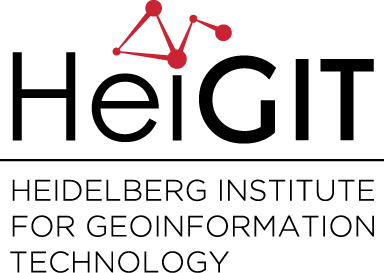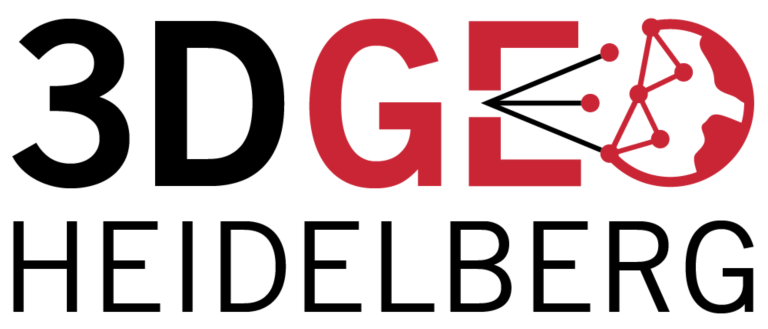Category: 3D
-
Beyond 3-D: The New Spectrum of LiDAR Applications for Earth and Ecological Sciences
Capturing and quantifying the world in three dimensions (x,y,z) using light detection and ranging (lidar) technology drives fundamental advances in the Earth and Ecological Sciences (EES). However, additional lidar dimensions offer the possibility to transcend basic 3-D mapping capabilities, including i) the physical time (t) dimension from repeat lidar acquisition and ii) laser return intensity…
-
Third Arctic Expedition to Trail Valley
The third arctic expedition to Trail Valley, located about 50 km north of Inuvik, NWT, Canada, concludes the field work within the PermaSAR project. Sabrina Marx, Katharina Anders (both: LiDAR Research Group, Heidelberg University) and Julia Boike (Alfred Wegener Institute, Potsdam) stayed a week in the research camp. We were not only able to acquire…
-
3D data acquisition in the Ötztal Alps – Exploring 3D GIScience on the “Monster of Rock”
As part of the practical field training “3D Geodatenerfassung im Hochgebirge (Ötztal), 31 July – 06 August”, the rock glacier “Äußeres Hochebenenkar” (42 ha), located in the Ötztal Alps in an elevation of 2,630-2,800 m a.s.l., was explored by 16 students under the direction of Bernhard Höfle, Stefan Hecht and Martin Hämmerle. With the help…
-
3D-TAIGER Summer School 2016 in Heidelberg
From 5-7 September 2016 the GIScience Heidelberg Group hosted a summer school within the collaboration and exchange project 3D-TAIGER (’Multi-Source 3D Geoinformation Extraction for Improved Management of Forest and Natural Hazards – Collaboration between TAIwan and GERmany’). The summer school is a follow-up of the kickoff meeting in Tainan in April this year. The first…
-
Workshop on Multi-Source 3D Geoinformation Extraction for Improved Management of Forest and Natural Hazards (5 Sep 2016, 9-17h)
Time: Monday, 5 September 2016, 09:00 – 17:00h Venue: Seminar Room 5.104, Im Neuenheimer Feld 205, Mathematikon No fees: Attendance of the scientific program is without costs. Objective and Scope The main objective of this public workshop is to bring together experts from Geosciences and 3D Earth observation / Geomatics, from academia and industry, as…
-
Video online – Multidimensional Perceptibility of Cultural Heritage (MUSIEKE)
The official video of the research project “Multidimensional Perceptibility of Cultural Heritage (MUSIEKE)” has been released and can be watched here: https://youtu.be/s3-4Rzye22U The project MUSIEKE aims at analyzing interrelations between perceptions and experiences of cultural heritage: in (1) museum environments, in (2) urban spaces and their spatio-temporal entanglements with the surrounding (cultural) landscape and in…
-
Impressions from ISPRS Congress 2016 in Prague
As we mentioned earlier, we contributed four papers to the ISPRS congress and participated in the CATCON contest for brilliant Computer Assisted Teaching tools. Our new LiDAR Simulator called HELIOS developed by Sebastian Bechtold received a lot of attention. You can also find us in this video of congress day 3. Our young researchers Katharina,…
-
Four contributions from GIScience Heidelberg at the ISPRS Congress in Prague
The LiDAR Research Group (LRG) of GIScience Heidelberg is contributing novel approaches for geological outcrop characterization, LiDAR simulation, tree classification as well as education in close-range sensing. You are kindly invited to visit our presentations at the ISPRS Congress 2016 in Prague. Furthermore our new HELIOS LiDAR Simulator will participate in the CATCON contest for…
-
New publication: ‘Terrestrial and unmanned aerial system imagery for deriving photogrammetric three-dimensional point clouds and volume models of mass wasting sites.’
The results of a study dealing with photogrammetric 3D geodata of mass wasting sites conducted at the GIScience were considered to be worth publishing in the Journal of Applied Remote Sensing: ‘Terrestrial and unmanned aerial system imagery for deriving photogrammetric three-dimensional point clouds and volume models of mass wasting sites.‘ Three-dimensional (3D) geodata of mass…
-
Report on Trail Valley Creek Research Station
The Tusaayaksat Magazine reports on the research activities at the Trail Valley Creek Research Station, Canada, where members of the LiDAR research group (Inga Beck, Sabrina Marx & Bernhard Höfle) captured in-situ data within the PermaSAR research project last summer: “Climate change research in our own backyard“, p. 58-63.
-
RNZ-Zeitungsflirt 2016 über die Geoinformatik
“Mit Geoinformatik zur knusprigen Pizza Margherita” – so lautet der Beitrag von Helen Sandbrink in der Sonderbeilage “Zeitungsflirt 2016” der Rhein-Neckar-Zeitung (RNZ) vom 10. Mai 2016. Frau Sandbrink beschreibt ihre Sicht auf die Geoinformatik, die sie durch einen Besuch am Geographischen Institut gewinnen konnte. Quelle: Rhein-Neckar-Zeitung (Nr. 107/2016), Seite 5 in der Sonderbeilage “Zeitungsflirt 2016”,…


